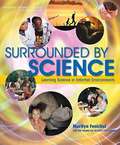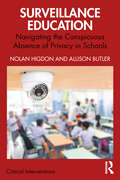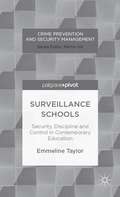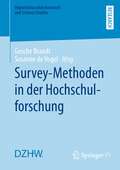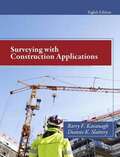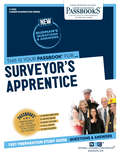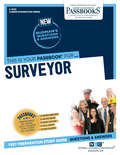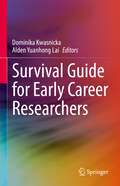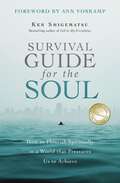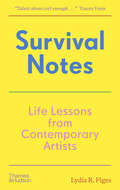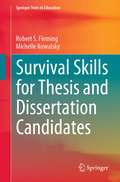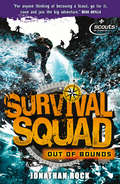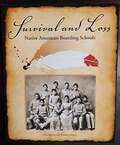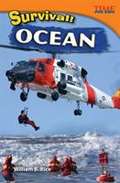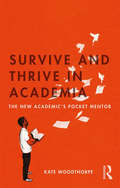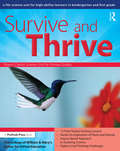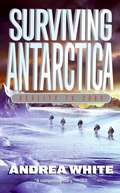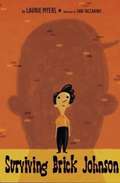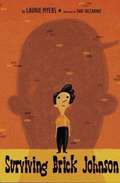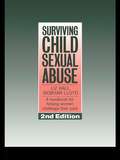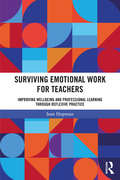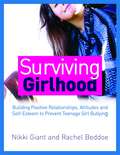- Table View
- List View
Surrounded by Science: Learning Science in Informal Environments
by National Research CouncilPractitioners in informal science settings--museums, after-school programs, science and technology centers, media enterprises, libraries, aquariums, zoos, and botanical gardens--are interested in finding out what learning looks like, how to measure it, and what they can do to ensure that people of all ages, from different backgrounds and cultures, have a positive learning experience. Surrounded by Science: Learning Science in Informal Environments, is designed to make that task easier. Based on the National Research Council study, Learning Science in Informal Environments: People, Places, and Pursuits, this book is a tool that provides case studies, illustrative examples, and probing questions for practitioners. In short, this book makes valuable research accessible to those working in informal science: educators, museum professionals, university faculty, youth leaders, media specialists, publishers, broadcast journalists, and many others.
Surrounded by Science: Learning Science in Informal Environments
by National Research Council of the National AcademiesPractitioners in informal science settings--museums, after-school programs, science and technology centers, media enterprises, libraries, aquariums, zoos, and botanical gardens--are interested in finding out what learning looks like, how to measure it, and what they can do to ensure that people of all ages, from different backgrounds and cultures, have a positive learning experience. Surrounded by Science: Learning Science in Informal Environments, is designed to make that task easier. Based on the National Research Council study, Learning Science in Informal Environments: People, Places, and Pursuits, this book is a tool that provides case studies, illustrative examples, and probing questions for practitioners. In short, this book makes valuable research accessible to those working in informal science: educators, museum professionals, university faculty, youth leaders, media specialists, publishers, broadcast journalists, and many others.
Surveillance Education: Navigating the Conspicuous Absence of Privacy in Schools (Critical Interventions)
by Nolan Higdon Allison ButlerSurveillance Education explores the pervasive use of digital surveillance technologies in schools and assesses its pernicious effects on students. Recognizing that the use of digital technologies will persist, the authors instead offer practical ways to ameliorate their impact.In our era of surveillance capitalism, digital media technologies are ever more intertwined into the educational process. Schools are presented with digital technologies as tools of convenience for gathering and grading student work, as tools of support to foster a more equitable learning environment, and as tools of safety for predicting or preventing violence or monitoring mental, emotional, and physical health. Despite a dearth of evidence to confirm their effectiveness, digital data collection and tracking is often presented as a way to improve educational outcomes and safety. This book challenges these fallacious assumptions and argues that the use of digital media technologies has caused great harm to students by subjecting them to oppressive levels of surveillance, impinging upon their right to privacy, and harvesting their personal data on behalf of Big-Tech. In doing so, the authors draw upon interviews from K–12 and higher education students, teachers, and staff, civil rights and technology lawyers, and educational technological programmers. The authors also provide practical guidance for teachers, administrators, students, and their families seeking to identify and combat surveillance in education.This urgent, eye-opening book will be of interest to students and educators with interests in critical media literacy and pedagogy and the sociology of technology and education.
Surveillance Schools: Security, Discipline and Control in Contemporary Education
by Emmeline TaylorFocusing on the phenomena of the Surveillance School, Taylor examines the increased presence of surveillance technologies and practices which identify, verify, categorise and track pupils, exploring the impact that invasive and continual monitoring is having upon school children.
Survey-Methoden in der Hochschulforschung (Higher Education Research and Science Studies)
by Gesche Brandt Susanne De VogelViele (Erhebungs-)Projekte in der Hochschulforschung bringen neue Erkenntnisse aus dem Bereich der Survey Methodology hervor. Damit Forschende von dieser Expertise profitieren und sie für die Optimierung ihrer Befragungspraxis nutzen können, werden die Ergebnisse in diesem Sammelband zusammengebracht. Vorgestellt werden Beiträge zum Thema Rekrutierung und Incentivierung, Survey Design und Mixed Devices, Instrumentenentwicklung, Panel Attrition und Non-Response sowie internationale Befragungen. Der Fokus liegt dabei auf den besonderen Herausforderungen, die die Erforschung Hochqualifizierter für die Durchführung quantitativer Studien mit sich bringt.
Surveying with Construction Applications
by Barry F. Kavanagh Dianne K. SlatteryTeaching and Learning Experience This book will help surveyors master all the modern skills, techniques, and technologies they need to work effectively with construction professionals and engineers: Thoroughly presents all the general surveying principles and techniques students need: Begins with eleven chapters walking through surveying fundamentals, distance measurement, computations, satellite positioning, geomatics, and much more -- including a brand-new math review chapter for students with limited math background Links principles and techniques to contemporary applications in the construction of most civil projects: Addresses a wide range of surveying applications, from highways and streets to pipelines, tunnels, bridges, culverts, and buildings Provides extensive hands-on practice, strong pedagogy, and valuable professional reference resources: Includes updated laboratory exercises, efficient features for review, useful reference appendices, up-to-date web links, and more
Surveyor's Apprentice: Passbooks Study Guide (Career Examination Series)
by National Learning CorporationThe Surveyor's Apprentice Passbook® prepares you for your test by allowing you to take practice exams in the subjects you need to study. It provides hundreds of questions and answers in the areas that will likely be covered on your upcoming exam.
Surveyor: Passbooks Study Guide (Career Examination Series #C-3030)
by National Learning CorporationThe Surveyor Passbook® prepares you for your test by allowing you to take practice exams in the subjects you need to study. It provides hundreds of questions and answers in the areas that will likely be covered on your upcoming exam.
Survival Guide for Early Career Researchers
by Dominika Kwasnicka Alden Yuanhong LaiNavigating research careers is often highly challenging for early career researchers (ECRs) in the social sciences. The ability to thrive in research careers is complex and requires "soft" people and management skills and resilience that often cannot be formally taught through university coursework. Written from a peer perspective, this book provides guidance and establishes emotional rapport on topical issues relevant for ECRs in academia and industry. The authors are ECRs who have been successful in navigating their careers, and they seek to connect with readers in a supportive and collegial manner. Each chapter includes elements of story-telling and scientific thinking and is organized into three parts: (1) a personal story that is relevant to the topic; (2) key content on professional and personal effectiveness based on evidence in the psychological, sociological, and/or management sciences; and (3) action points and practical recommendations. The topics covered are specifically curated for people considering undertaking research careers or already working in research, including:Work Hard, Snore Hard: Recovery from Work for Early Career ResearchersNetworking and Collaborating in Academia: Increasing Your Scientific Impact and Having Fun in the ProcessAccelerating Your Research Career with Open ScienceEngaging with the Press and MediaMake Your Science Go Viral: How to Maximize the Impact of Your ResearchExploring the Horizon: Navigating Research Careers Outside of AcademiaThinking like an Implementation Scientist and Applying Your Research in PracticeSurvival Guide for Early Career Researchers summarizes relevant evidence-based research to offer advice in strategic but also supportive ways to ECRs. It is an essential go-to practical resource for PhD students, postdoctoral fellows, and junior faculty. This book will also benefit senior researchers who are serving as mentors or delivering professional development programs, administrators and educators in institutions of higher learning, and anyone with an interest in building a successful research career.
Survival Guide for the Soul: How to Flourish Spiritually in a World that Pressures Us to Achieve
by Ken ShigematsuWINNER OF THE WORD GUILD 2019 CHRISTIAN LIVING BOOK OF THE YEAR AWARD"The pages you are about to read may feel like a literal rescue." —Ann Voskamp, New York Times Bestselling authorSurvival Guide for the Soul is a profound spiritual exploration of God's love—a love that many of us understand intellectually without fully grasping or relying on in our day-to-day experiences—a love that fills our sails with joy and frees us to truly flourish.Many of us are driven by an ambition to accomplish something big outside ourselves. On all sides, we're pressured to achieve—professionally, socially, financially. Even when we're aware of this pressure, it can be hard to escape the vicious circles of accomplishment, frustration, and spiritual burn-out.Drawing on a wide range of sources from Scripture to church history to psychology and modern neuroscience—as well as deeply personal stories from his own life—Ken Shigematsu, recipient of the Queen Elizabeth Diamond Jubilee Medal and pastor of Tenth Church in Vancouver, BC, vividly demonstrates how the gospel redeems our desires and reorders our lives.Pastor Shigematsu offers fresh perspective on how certain spiritual practices help orient our lives so that our souls can flourish in the midst of a demanding, competitive society. And he concludes with a liberating and counter-cultural definition of true greatness.If you long to experience a deeper relationship with Christ within the daily pressures to succeed, Survival Guide for the Soul is packed with biblical wisdom and a godly approach to transcend the human tendency to define ourselves by our productivity and success."Loaded with practical insights and encouraging thoughts, every reader will benefit from Ken's work." —Max Lucado, New York Times Bestselling author
Survival Notes: Life Lessons from Contemporary Artists
by Lydia Rachel FigesWeaving artists' reflections and anecdotes with their invaluable words of advice to aspiring creatives, this inspiring book explores the practical realities of the art world and demystifies the route to professional success. Survival Notes is an inspiring narrative weaving artists' reflections on success with advice to aspiring creatives. Featuring direct quotes and exclusive interviews with internationally acclaimed artists such as Anish Kapoor, Shirin Neshat, Tracey Emin, Jesse Darling, and Shahzia Sikander, this book offers authoritative counsel on how to thrive in a highly competitive art world as well as thoughtful insights on what it means to be an artist in the twenty-first century. Nine thematic chapters offer essential guidance on how to negotiate the practical realities of artmaking, with discussions relating to education, self-discipline, gallery representation, mental wellbeing, mentorship and more. In a climate where emerging creatives feel less empowered than ever, Lydia R. Figes provides a hopeful message about perseverance and perspective, while questioning whether the advice given by established practitioners can still be applied today.
Survival Schools: The American Indian Movement and Community Education in the Twin Cities
by Julie L. DavisIn the late 1960s, Indian families in Minneapolis and St. Paul were under siege. Clyde Bellecourt remembers, &“We were losing our children during this time; juvenile courts were sweeping our children up, and they were fostering them out, and sometimes whole families were being broken up.&” In 1972, motivated by prejudice in the child welfare system and hostility in the public schools, American Indian Movement (AIM) organizers and local Native parents came together to start their own community school. For Pat Bellanger, it was about cultural survival. Though established in a moment of crisis, the school fulfilled a goal that she had worked toward for years: to create an educational system that would enable Native children &“never to forget who they were.&”While AIM is best known for its national protests and political demands, the survival schools foreground the movement&’s local and regional engagement with issues of language, culture, spirituality, and identity. In telling of the evolution and impact of the Heart of the Earth school in Minneapolis and the Red School House in St. Paul, Julie L. Davis explains how the survival schools emerged out of AIM&’s local activism in education, child welfare, and juvenile justice and its efforts to achieve self-determination over urban Indian institutions. The schools provided informal, supportive, culturally relevant learning environments for students who had struggled in the public schools. Survival school classes, for example, were often conducted with students and instructors seated together in a circle, which signified the concept of mutual human respect. Davis reveals how the survival schools contributed to the global movement for Indigenous decolonization as they helped Indian youth and their families to reclaim their cultural identities and build a distinctive Native community.The story of these schools, unfolding here through the voices of activists, teachers, parents, and students, is also an in-depth history of AIM&’s founding and early community organizing in the Twin Cities—and evidence of its long-term effect on Indian people&’s lives.
Survival Skills for Thesis and Dissertation Candidates (Springer Texts in Education)
by Robert S. Fleming Michelle KowalskyThis is a must-have preparation and reference guide for students embarking on the challenging journey of completing a thesis or dissertation. The authors, who are both “students of thesis and dissertation travel,” combine their expertise and insights to offer wise travel guidance designed to enhance both the success and satisfaction of this likely once-in-a-lifetime journey. The various chapters provide a realistic preview of how to prepare for and how to complete each stage of this travel journey successfully. Individual chapters on each of the major tasks each serve as an important reference for students to review as they progress, thus providing a guide which will be consulted many times throughout their program. The book provides advice on the most common aspects of the thesis or dissertation process, and it is written in a user-friendly manner designed to engage students and to enhance their comfort level as they journey through their candidacy. The importance of each task in the thesis or dissertation journey is addressed, along with its role in contributing to a successful outcome, and is accompanied by advice and suggestions from previous travellers. The challenges inherent in all stages of the journey are examined, along with proactive strategies for avoiding potential “bumps in the road.” You will not want to depart on this monumental travel adventure without this valuable survival guide!
Survival Squad: Book 1 (Survival Squad #1)
by Jonathan RockThere's a reason they're known as the Survival Squad...The Tiger Patrol are on an expedition out on the wild and desolate moors when a new member runs off. Soon they're all in trouble - they're completely lost, and they have no way of contacting anyone for help... This is where their training kicks in - are they prepared to survive outdoors?
Survival and Loss: Native American Boarding Schools
by Developmental Studies Center StaffThe displacement of Native American tribes from their land and the destruction of Native American culture began the moment the first Europeans set foot in North America. As European settlers pushed westward, claiming more and more territory, Native Americans were pushed onto tiny pieces of land called reservations. <p><p>When it became clear that the reservations could not support the Native American tribes or their way of life, the U.S. government was faced with the problem of what place Native Americans had in this new country. Its solution was to forcibly educate thousands of Native American children at off-reservation boarding schools in the hope that they, and eventually all Native Americans, would learn to live like European American citizens. <p><p>These children were taken away from their families and the lives they knew and set to boarding schools where they were forbidden to speak their own languages or practice their traditions. The children often faced terrible living conditions and cruel treatment as they struggled to keep their culture alive. This is their story. --Back cover
Survival of the Fittest
by Qi Li Cynthia Gerstl-PepinThis book will examine how universities in China and the US are responding to markets and increasing global competition. For both countries, a university education is seen as key to economic development. While China and the US have two very different political systems, they represent the two largest economies in the world and share beliefs that higher education plays an integral role to economic development. The book will bring together scholars with multiple perspectives on the topic to create dialogue around similarities and differences. This book will appeal to students, scholars, and higher educational administrators in both countries and other countries as well who are seeking to understand the strategic change in higher education in both China and the US.
Survival!: Ocean (Time For Kids Informational Text Series)
by William B. RiceWhat do you do if you find yourself stranded at sea? This useful nonfiction book gives readers the information they need in order to survive at sea. With essential tips and instructions, helpful diagrams and images, a bibliography, and a list of other useful websites, readers will learn everything they need in order to survive--from the dangers of hypothermia, what to do if there's only saltwater available, and other useful survival skills.
Survive and Thrive in Academia: The New Academic’s Pocket Mentor
by Kate WoodthorpeA pocket mentor for the early career academic learning to strategically navigate the demands of an academic role, this book is a friendly and constructive companion providing hands-on advice about how to balance teaching responsibilities alongside other duties. More than just a ‘how to’, the text is a timely commentary on changes in higher education. Discussing contemporary developments and offering guidance on how to negotiate this evolving climate, the book uniquely captures the political, social, economic and cultural forces at play, taking into account the issues which influence and shape an academic’s career trajectory. Organised around the three main tasks within a conventional academic post – teaching, research and administration – the book includes tips, pauses for thought, author reflections and sources for further reading, and provides insight to help the reader reflect on what they are doing, why, and where to go next in their career. Crucially, it shows that in order to survive and flourish, the early career academic needs to take a strategic view as to their function, purpose and contribution both inside and beyond the intellectual establishment. From establishing a research niche to getting stuck into administration Survive and Thrive empowers the early career academic, helping them to build their academic reputation both internally and externally and maintain a sense of personal fulfilment and accomplishment within an increasingly commercialised environment.
Survive and Thrive: A Life Science Unit for High-Ability Learners in Grades K-1
by College of William & Mary's Centre for Gifted ChildrenSurvive and Thrive, a life science unit for grades K-1, provides students an opportunity to study animals, their characteristics, and their natural environments. The overarching concept of change guides students as they use webcams to distinguish the features of animals, determine their basic needs to survive, and observe animals in their habitats.Survive and Thrive was developed by the Center for Gifted Education at The College of William and Mary to offer advanced curriculum supported by years of research. The Center's materials have received national recognition from the United States Department of Education and the National Association for Gifted Children, and they are widely used both nationally and internationally.Each of the books in this series offers curriculum that focuses on advanced content and higher level processes. The science units contain simulations of real-world problems, and students experience the work of real science by using data-handling skills, analyzing information, and evaluating results. The mathematics units provide sophisticated ideas and concepts, challenging extensions, higher order thinking skills, and opportunities for student exploration based on interest. These materials are a must for any teacher seeking to challenge and engage learners and increase achievement.Grades K-1
Surviving Antarctica: Reality TV 2083
by Andrea WhiteThe wind and snow blow so hard, you can't see your hand in front of your face. Your heating fuel is nearly gone, and so is your food. How do you survive? Five fourteen-year-olds face this desperate situation on a deadly journey in Antarctica. It is 2083. They are contestants on a reality TV show, Antarctic Survivor, which is set up to re-create Robert F. Scott's 1912 doomed attempt to be the first to reach the South Pole. But in 2083 reality TV is not just an act. Contestants literally relive or die during the simulations of events. Robert Scott and his team were experienced explorers and scientists, but their attempt to reach the Pole proved fatal. What chance does the Antarctic Survivor team have? This action-packed, riveting adventure - full of fascinating direct quotes from Scott's journals and other accounts of the expedition - is both a heart-wrenching drama from the past and a disquieting glimpse into the future. Ages 12+
Surviving Brick Johnson
by Dan Yaccarino Laurie MyersAlex is running for his life. After making fun of the notorious bully Brick Johnson, he's now convinced that Brick is out to get him. There is only one way to survive Brick Johnson--take karate lessons and become a powerful sensei. But after Brick shows up in karate class and treats Alex with respect, Alex's picture of him begins to change. How can Brick be a bully and a nice guy at the same time?
Surviving Brick Johnson (Fountas & Pinnell LLI Gold #Level N)
by Laurie MyersAfraid of getting maimed for making fun of Brick, the husky new kid in his fifth-grade class, Alex decides that even his baseball collection will not protect him, so he signs up for karate class despite his little brother's reassurances that Brick is not a bully.
Surviving Child Sexual Abuse: A Handbook For Helping Women Challenge Their Past
by Liz Hall Siobhan LloydSurviving Child Sexual Abuse" is a handbook for survivors and their helpers. It examines what sexual abuse entails for a child and why it happens. Personal and professional issues for helpers are addressed and the long term effects of sexual abuse are examined. The strengths of survivors are acknowledged together with the supportive alliances they have formed with partners, helpers and friends. The theme of disclosure is examined in depth and the main themes in therapeutic work with survivors are discussed and methods are described which can be used in such therapeutic work. This highly successful book ends with an evaluation of the issues involved in training helpers for working with survivors.; The book is aimed at therapists including social workers, counsellros in public organizations and private practice, clinical psychologists, psychiatrists, nurses, health visitors, general practitioners, police and psychotherapists.
Surviving Emotional Work for Teachers: Improving Wellbeing and Professional Learning Through Reflexive Practice
by Jean HopmanSurviving Emotional Work for Teachers is a guide to improving teachers’ wellbeing and practice through support of their emotional workload. The book argues that teachers should be given a formal opportunity to debrief on challenging events, allowing them to reflect on and reframe these experiences in a way that informs future practice to prevent the emotional fatigue that can lead teachers to leave the field altogether. Each chapter opens with a teacher’s story, acknowledging the emotional layers present in the scenario and what learnings can be drawn from it. Each of these stories features tension between what is expected of teachers, and how they are limited to act, which is further fuelled by underlying assumptions. This is valuable reading for teachers at all stages of their career, whether preparing for the complex work ahead or making sense of past and current experiences. This book offers a reflexive process that teachers and schools can implement to facilitate the useful exploration of their emotion. Such a process is vital for the overall wellbeing of any school.
Surviving Girlhood: Building Positive Relationships, Attitudes and Self-Esteem to Prevent Teenage Girl Bullying
by Nikki Giant Rachel BeddoeTeenage girls can be mean. Often stemming from poor self-awareness, self-esteem and lack of relationship skills, complex friendship dynamics can be difficult to unravel and bullying can be hard to resolve. Surviving Girlhood provides a unique resource for preventing girl bullying by addressing the root causes and helping girls to be strong, positive individuals. Part 1 covers the facts on girl bullying, how to understand it, and the particular complexity of girls. Part 2 includes over 60 tried-and-tested activities that will help girls understand their needs, values, beliefs and influences as drivers for their behaviour. Through five key themes, from 'Being Me' to 'Conflict Resolution', they will also build self-awareness, self-esteem, and strong relationship skills. This photocopiable resource will be an invaluable tool for teachers, youth workers, counsellors, youth offending teams, behavioural specialists and all those working with girls aged 11--16.

